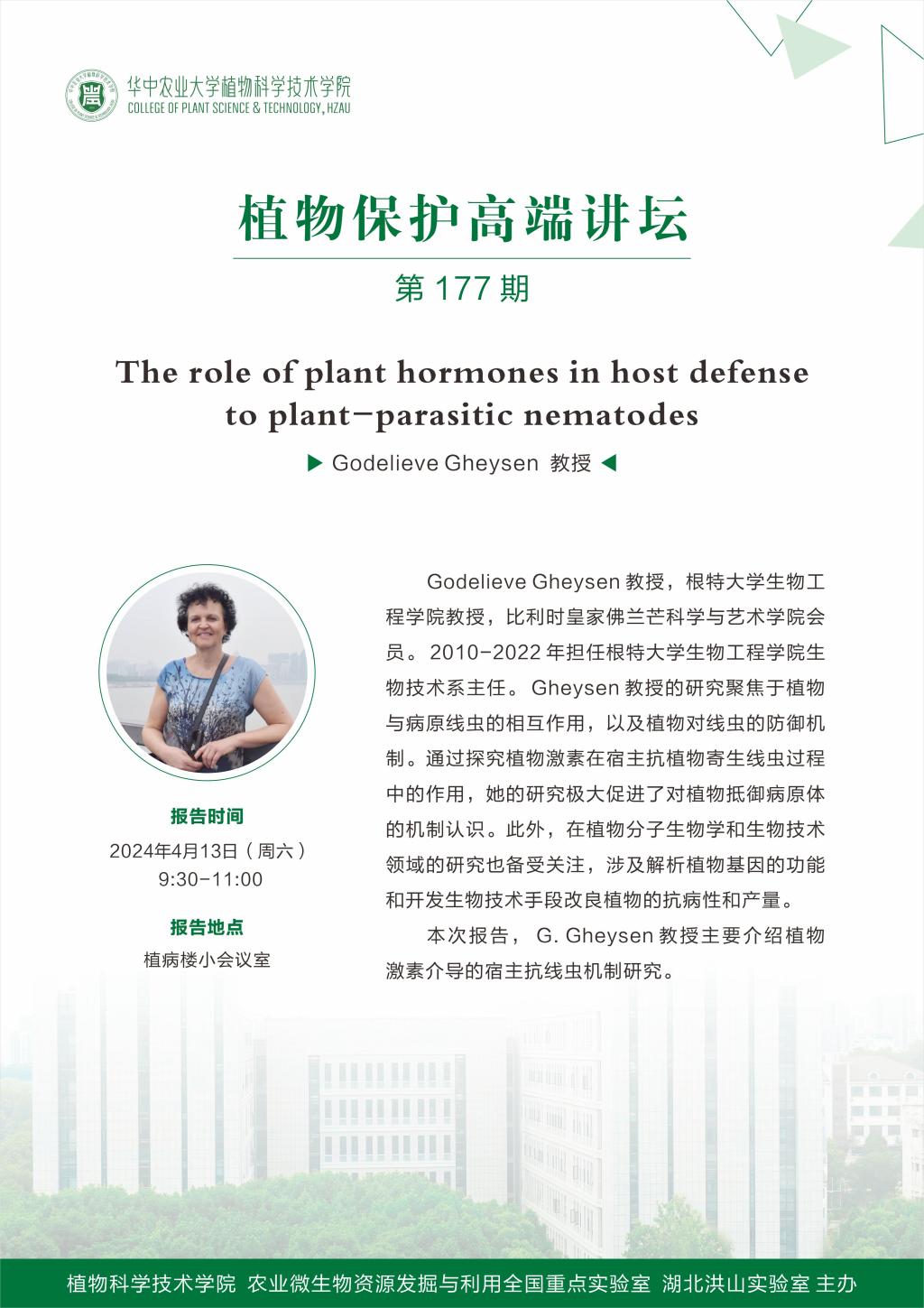搜索结果: 1-15 共查到“植物保护学 host”相关记录17条 . 查询时间(0.109 秒)

Key scale insects (Hemiptera: Coccoidea) of high economic importance in a Mediterranean area: host plants, bio-ecological characteristics, natural enemies and pest management strategies – a review
Planococcus ficus Planococcus citri Saissetia oleae Parlatoria ziziphi grapevine citrus olive Integrated Pest Management Tunisia
2017/4/6
Key scale insects that have long been considered as having high economic importance in Tunisia and for which several research studies and pest management programs have been undertaken include the meal...
Pathogenicity of Beauveria bassiana to Fall Webworm (Hyphantria cunea) (Lepidoptera: Arctiidae) on Different Host Plants
entomopathogenic fungi Artemisia annua
2015/3/10
A study on the compatibility of the entomopathogenic fungus Beauveria bassiana with two medicinal plants, Artemisia
annua (0.5%) and Lavandula stoechas (0.6%), was conducted against fall webworm, Hy...
Host range and growth of Stem and Bulb Nematode (Ditylenchus dipsaci) populations isolated from garlic and chicory
Ditylenchus dipsaci vegetable host range
2015/2/2
Host range and growth of two Ditylenchus dipsaci (Stem and Bulb Nematode) populations on onion, garlic, leek, spinach and chicory were compared. Inoculation was conducted by placing a droplet of 1.5% ...
Influence of temperature and host plants on the development and fecundity of the spider mite Tetranychus urticae (Acarina: Tetranychidae)
Tetranychus urticae temperature development fecundity
2015/1/30
Temperature plays a key role in the time needed for development of Tetranychus urticae. It developed fastest at 35°C (6.50 d) and 30°C (6.93 d), while at 15°C it took 16.23 d. The higher the temperatu...
Review of historical outbreaks of the nun moth with respect to host tree species
Czech Republic historical outbreaks host tree species Lymantria monacha polyphagy
2015/5/6
The nun moth (Lymantria monacha /L./) is a polyphagous pest feeding on coniferous and deciduous trees in Eurasia. This paper, based on a literature review, presents an overview of the nun moth outbrea...
Fraxinus spp. are deciduous trees belonging to the family Oleaceae. Among about 70 known ash species in the world, the common ash (Fraxinus excelsior) is the most widely distributed in Europe;black (F...
Evaluating host plant resistance in cotton (Gossypium hirsutum L.) with varying gland densities to tobacco budworm (Heliothis virescens F.) and bollworm (Helicoverpa zea Boddie) in the field and laboratory
Cotton Gossypol Helicoverpa Heliothis Terpenoid Aldehydes
2013/2/27
Cotton (Gossypium hirsutum L.) produces a number of toxic terpenoid aldehyde (TA) compounds contained in epidermal glands that help protect the plant from pests and diseases. In the seed, one of these...
Host-status and host-sensitivity of Cucumis africanus and Cucumis myriocarpus to Meloidogyne incognita race 2 under greenhouse conditions
Cucurbitacin indigenous plants plant-parasitic nematodes
2011/1/11
Four economically important genera in the Cucurbitaceae family, namely Citrullus, Cucumis, Cucurbita and Langenaria, have no resistance to Meloidogyne species, which cause extensive crop losses. Certa...
Suitability of Potential Host Plants in Japan for Immature Development of the Coconut Hispine Beetle, Brontispa longissima (Gestro) (Coleoptera: Chrysomelidae)
alternative plant coconut leaf beetle Cocos nucifera invasive pest mass-rearing
2010/10/25
The coconut hispine beetle, Brontispa longissima is a foliage feeder of the coconut palm, Cocos nucifera and other palm plants. Because B. longissima, supposedly native to Indonesia and Papua New Guin...
Improving the Mass Rearing Possibilities of Serangium montazerii Fürsch(Coleoptera: Coccinellidae)on Different Host Plants of Bemisia tabaci(Genn.)(Homoptera:Aleyrodidae)
Serangium montazerii Bemisia tabaci biology life table
2009/1/13
The objectives of this study were to identify suitable plant species for mass rearing and to determine some biological characteristics of the predator Serangium montazerii Fürsch (Coleoptera: Coccinel...
Host-Specific Toxin Production by the Tomato Target Leaf Spot Pathogen Corynespora cassiicola
Corynespora cassiicola host-specific toxin (HST) target leaf spot tomato
2009/1/13
The culture filtrate (CF) of Corynespora cassiicola, the causal agent of target leaf spot of tomato, produced visible small, pinpoint, water-soaked lesions on the lower surface of wounded, detached le...
Host Preference and Nutrition Efficiency of the Gypsy Moth, Lymantria dispar L.(Lymantriidae:Lepidoptera), on Different Poplar Clones
Host preference gypsy moth Lymantria dispar olfactometric analysis Populus spp
2009/1/7
Poplar is a tree species with a considerable growth rate and the ability to produce high yield in a short period of time, and is one of the main sources of wood in Iran. Considering its importance, th...
Environmental and Host Plant Effects on Insecticide Susceptibility of the Cotton Aphid (Homoptera: Aphididae)
Environmental Host Plant Insecticide Susceptibility Cotton Aphid
2008/12/10
Insecticidal control of the cotton aphid (Aphis gossypii Glover) in California is often erratic. Genetic, selection-induced resistance is certainly a factor in many cases. However, field observations ...
Cotton Fleahopper (Heteroptera: Miridae) Responses to Volatiles from Selected Host Plants
Selected Host Plants Volatiles Cotton Fleahopper (Heteroptera: Miridae) Responses
2008/6/5
Several field studies have indicated that cotton fleahoppers (Pseudatomoscelis seriatus Reuter) prefer some wild host plants instead of cotton (Gossypium hirsutum L.). The relative attractiveness of v...


